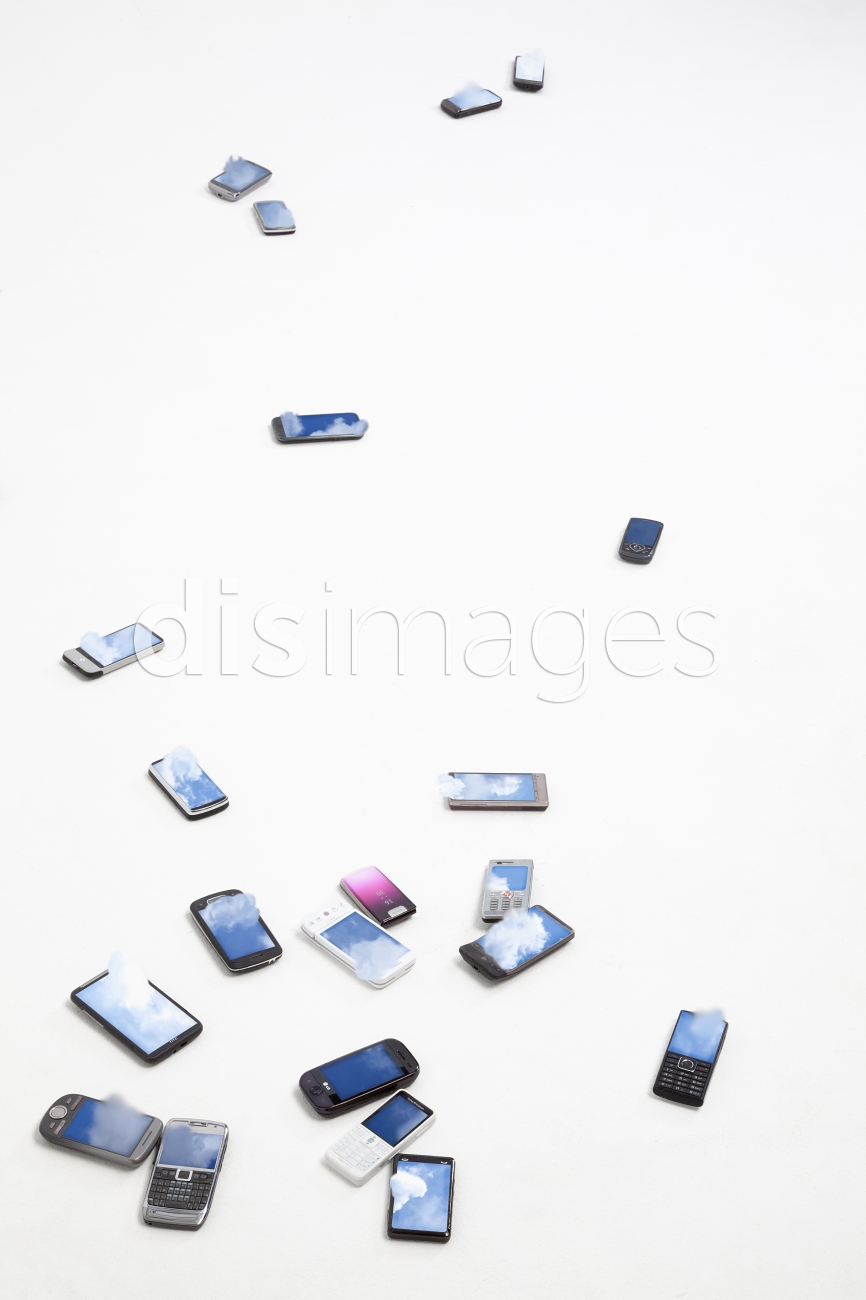
The story of DIS is closely entwined with the collapse of the line between art, commerce and the internet. Founded in late 2009 in New York in the wake of the Lehman Brothers’ crash, the art collective’s ascendance was characterised from the outset by a heavy dose of cynicism at the self-evident crumbling of the American dream. Even their name was inherently oppositional, stripped from a prefix to a single syllable. Theirs was the philosophy of the DIS: disinterest, disengagement and disconnection.
The visual lexicon of DIS was one of super-slick graphics, early-2000s corporate lingo and awkward stock imagery. Instead of rejecting the markers of rampant capitalism, the group embraced and enhanced them. Unsurprisingly, it was founded by a group of seven friends (Lauren Boyle, Solomon Chase, Marco Roso, David Toro, Nick Scholl, Patrik Sandberg and Samuel Adrian Massey) who came from backgrounds in advertising, branding and cultural PR. They had peeked behind the curtain of the cloistered worlds of art and fashion, where ruthless KPIs and diminishing marketing spend saw an industry ever-more squeezed by the quest for profit.

For DIS, the price of any item, whether big or small, was not just an afterthought. Like many of their generation who came of age just as the global financial crash hit, they could neither afford to ignore the vulgar markers of money nor the cold, hard cash itself. Instead, the price of any object of desire, from artwork to streetwear collaboration, became the starting point for their process of creative production. They moved easily between the language of the boardroom, the art fair and the supermarket, with each element united by their ultimate goal of the final sale.
“Knowingly distasteful and painfully tongue-in-cheek, DIS served as rehydration fluid for jaded twenty and thirty-somethings”
Established first as an online magazine, the heavily art-directed pages of DIS were populated by shopping trolleys, fashion logos and mass-produced, low-value items. These signifiers of commerce were set alongside digital artworks and texts by artists who had been dubbed with the still-nascent ‘post-internet’ label, from Petra Cortright to Simon Fujiwara and Amalia Ulman. Knowingly distasteful (one photo shoot featured energy drinks and Starbucks coffees served in Crocs and flip-flops) and painfully tongue-in-cheek, DIS served as rehydration fluid for jaded twenty and thirty-somethings, starved of real content, who could see through the bullshit served to them by brands but couldn’t find any escape. If you can’t look away from your screen, it seemed to say, just sit back and embrace the infinite scroll.

“Generation DIS is what the Internet did to the avant-garde,” Christopher Glazek wrote in 2014 in Artforum. He described the magazine’s market-oriented provocations, in particular its DISown initiative, which saw the group commission consumer products from a range of contemporary artists and designers (“an art exhibition posing as a retail store”). The offerings ranged in price from $10 to almost $5,000 for baseball caps, cushions, a DIS Ikea bag and doormats. Some unique items were made to look mass-produced, complete with sewn-in labels and price tags, in keeping with the group’s ongoing fascination with popular consumer culture. Their collaboration with Red Bull Studios, which hosted the exhibition, was placed front and centre in promotional materials, a far cry from the discreetly buried corporate sponsorships of museum shows.
“DIS sought to rise above the hypocrisy of modern consumerism, where buzzwords like ‘unique’ and ‘handcrafted’ could be applied to anything”
It is no coincidence that the ‘normcore’ trend, which favoured sameness over ‘difference’ or ‘authenticity’ as a means of standing out, was coined at around the same time. “New media has changed our relation to information, and, with it, fashion,” wrote Fiona Duncan in her definitive essay on normcore published in The Cut in early 2014. She pointed to digital tools such as reverse Google Image search, eBay and Pinterest that have demystified style tribes and visual inspiration, all but erasing subculture. Likewise, DIS sought to rise above what its founders saw as the hypocrisy of modern consumerism, where buzzwords like ‘unique’ and ‘handcrafted’ could be applied to anything from soft drinks to beauty products, and instead bask in the seductive power of branding.

In 2016, DIS took over the Berlin Biennial as the curators of one of Europe’s most important art showcases. “Welcome to the LOL biennial”, Jason Farago, now the art critic-at-large of the New York Times, wrote scathingly in The Guardian at the time. The onetime curators, Farago argued, “celebrate the middlebrow and the ornery; and revel in sponsorships and branding opportunities that efface any distinction between creation and complicity.” He went on: “For them, art is hopelessly tainted by commerce and the past is for suckers. Neoliberalism mechanically slays critical thinking, so insincerity is the only way out.”
“DIS’s concern with the digital refashioning of the self looks altogether more quaint in light of TikTok and Twitch”
The question of sincerity is a loaded one in 2021. More than a year into the pandemic, and the so-called earnestness of Gen Z looks less generational and more an inevitable symptom of our turbulent times. Aren’t we all feeling somewhat beyond irony? A decade on from the genesis of DIS, and its concern with the digital refashioning of the self looks altogether more quaint in light of insidious new platforms such as TikTok and Twitch. Even the most absurd of DIS’ creations seem suddenly less far-fetched, whether that is their digitally manipulated shoulder dysmorphia photo series or their upright sleeping solutions for mobile lifestyles.

DIS magazine ceased publication in 2017, but the collective remains active through founding members Boyle, Chase, Roso and Toro. Their original critical perspective is still undoubtedly influential, but many of the emerging artists who they first championed have moved beyond the post-internet bubble. In the last decade America has witnessed the rise and fall of Donald Trump, a turn of events more outlandish than even DIS could have predicted.
Server farms have grown ever larger, hosting the millions of photos and videos that are uploaded to Instagram and YouTube every day. We each knowingly leave a data imprint of ourselves behind, aware of the corporations who feed upon the online digital selves that we create. While the cynicism of DIS was once a commodity in itself, it no longer stands out; we are collectively now just as numb to the hypocrisies of our time.





